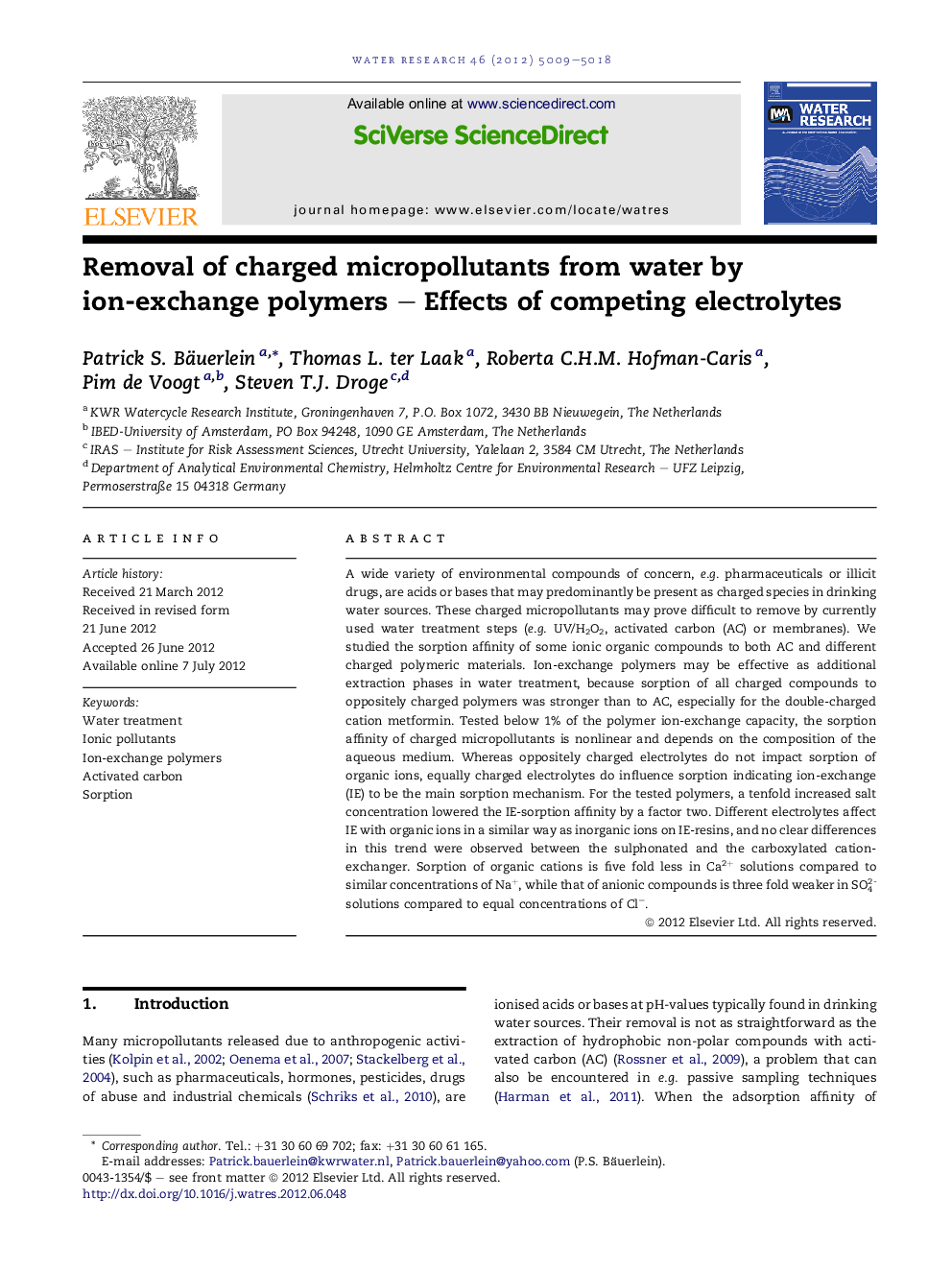| Article ID | Journal | Published Year | Pages | File Type |
|---|---|---|---|---|
| 4482730 | Water Research | 2012 | 10 Pages |
A wide variety of environmental compounds of concern, e.g. pharmaceuticals or illicit drugs, are acids or bases that may predominantly be present as charged species in drinking water sources. These charged micropollutants may prove difficult to remove by currently used water treatment steps (e.g. UV/H2O2, activated carbon (AC) or membranes). We studied the sorption affinity of some ionic organic compounds to both AC and different charged polymeric materials. Ion-exchange polymers may be effective as additional extraction phases in water treatment, because sorption of all charged compounds to oppositely charged polymers was stronger than to AC, especially for the double-charged cation metformin. Tested below 1% of the polymer ion-exchange capacity, the sorption affinity of charged micropollutants is nonlinear and depends on the composition of the aqueous medium. Whereas oppositely charged electrolytes do not impact sorption of organic ions, equally charged electrolytes do influence sorption indicating ion-exchange (IE) to be the main sorption mechanism. For the tested polymers, a tenfold increased salt concentration lowered the IE-sorption affinity by a factor two. Different electrolytes affect IE with organic ions in a similar way as inorganic ions on IE-resins, and no clear differences in this trend were observed between the sulphonated and the carboxylated cation-exchanger. Sorption of organic cations is five fold less in Ca2+ solutions compared to similar concentrations of Na+, while that of anionic compounds is three fold weaker in SO42- solutions compared to equal concentrations of Cl−.
Graphical abstractFigure optionsDownload full-size imageDownload high-quality image (344 K)Download as PowerPoint slideHighlights► We show the influence of different inorganic ions on the sorption of organic ions. ► Column experiments are used to evaluate in the influence of the different salts. ► Ion-exchange materials can be a useful material in water treatment in combination with AC.
